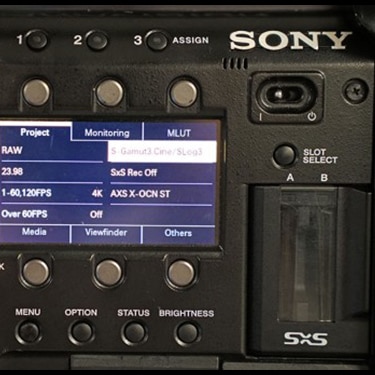R7 talk: Peter Spans shoots with CineAlta
Hamburg-based filmmaker Peter Spans shares the creative experience of shooting 16-bit F55 RAW with our F55 CineAlta camera and the new R7 external memory recorder.

Director, producer and writer Peter Spans has forged a successful career behind the camera over the last quarter century, shooting commercial spots for major brands like Müller and Jägermeister.
Working in partnership with DoP and long-term associate Alexander Palm (BVK), he’s also currently producing full-length independent feature Undo that’s due for release in early 2018. For their advertising work and long-form projects alike, the busy duo have standardised on our F55 CineAlta camera to achieve a satisfying filmic look with uncompromised creative flexibility.
A veteran of digital filmmaking, Peter explains why shooting 16-bit F55 RAW – pairing the F55 with our new AXS-R7 4K memory recorder – has proved the ideal choice from a commercial and creative standpoint: “A couple of years ago we started looking around seriously for a new movie camera. Right away I knew I wanted something capable of effortlessly producing pictures with a really great cinematic feel, great natural skin tones, and with all the grading options open.
“Our work as a production company is very diverse – we could be shooting indoors at a masked ball, outdoors with fast-moving sport at night or green screen work. So I need a camera that can cover every situation. Great low-light performance was a must. And I also wanted good bit-depth and really good RAW performance.”
And as Peter notes, handling and ergonomics are equally crucial from a director’s point of view: “We do a lot of handheld work, especially for dialogue, so I’m moving around a lot: I definitely didn’t want a heavy camera.”


Peter and Alexander’s demands rapidly narrowed down their camera choices to just one serious contender: “We’d tried just about every popular movie camera put there, but didn’t like what we were seeing. For example with one popular camera we just didn’t like the way skin tones looked. But now we’ve picked the F55, we use it for virtually all our commercial and long-form projects.
“Advertising is all about short turnaround times. You’re after eye candy, so you try a whole lot of things and you learn a lot in the process. For us, it makes a whole lot of sense to experiment with all the different lenses out there… but it makes little sense to swap cameras if you really don’t need to. You’d change your whole ingest, and most likely find yourself dealing with a load of time-consuming inconsistencies when you should be focusing on being creative.
“We shoot absolutely everything in F55 RAW. In fact we hardly use anything else – actually we also record XAVC in parallel, but seldom use it. I love the consistency of the material over the past firmware versions: you load it, and you know everything’s there in the same way. What I hate is different kinds of RAW with every firmware upgrade – and that’s something we don’t have to worry about here.
“What I really love about Sony´s F55 RAW is that it’s 16-bit. One thing I’ve found really striking is the way it captures highlights. It’s a whole lot more colourful than another popular camera, for instance.”
While shooting Undo, Peter and Alexander have been using two Sony F55’s, together with the AXS-R5 and also the new AXS-R7 recorder that adds 4K recording at up to 120 fps with the F55 for smooth 10x super slow motion. On future projects, Peter is also looking forward to testing the R7’s ability to record in X-OCN, comparing the efficient new format with F55 RAW as used for Undo.
“Of course, if you want all the information you get a lot of data. And like any other good RAW, F55 RAW eats up a lot of disk space. Despite the fact that the R7 can record a stunning 120 fps in 4K, I’m quite intrigued to continue in-depth testing the new X-OCN format. At a first glance, it seems to be good even for cinematic work and a lot less space-hungry. Right now I’d say it looks good with all kinds of gradings. We still have to test X-OCN in a VFX context – for example with green screen – to see if that makes a difference compared to the current F55 RAW.”
Most of all, Peter is drawn to the camera’s sympathetic character, likening it to the aesthetic appeal of analogue:
“I’ve witnessed every technology trend in shooting and post, and I’m not a fan of sterile pictures. Digital lets me keep all the information in a scene. If you shoot at the F55’s default ISO, there’s a little bit of ‘grain’ that’s really nice; it’s almost film-like in feel. I also like experimenting with camera profiles to get different looks. For example I might shoot S-Log3 and then ‘pretend’ that it’s S-Log2 when I’m colour correcting.
“Shooting F55 RAW with the F55 I’ve always got plenty of choices to achieve the look I’m after for a particular project – whether it’s a commercial or a full-length movie.”

